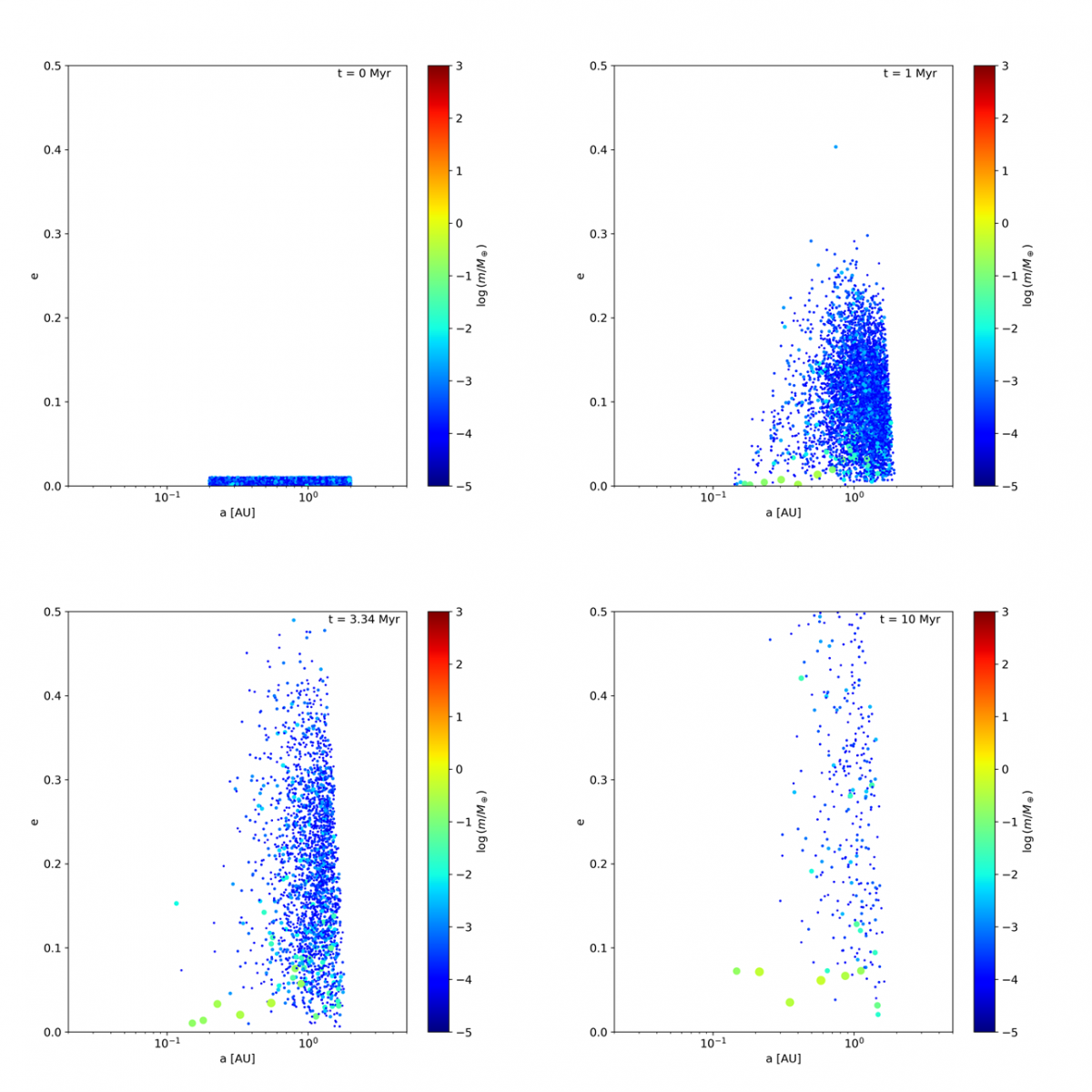
How do planets form? In our own solar system our understanding is assisted both by numerical computation and by analyses of samples from meteorites, the Moon, Mars and Vesta. Yet, for planets around other stars – called extrasolar planets, or exoplanets for short – no physical samples are available and we rely on computation for statistical comparisons with observations of exoplanet mass, radius and orbit. Planet formation is computationally expensive because small, rocky planets like the Earth are most likely formed through the cumulative collisions between small bodies such as asteroids1. For this reason, planetary scientists aim to simulate tens- to hundreds of thousands of gravitationally interacting bodies on supercomputers.
The advent of graphics card (GPU) computing has allowed planetary scientists to run such simulations on a single GPU within the timespan of a few months and at less energy consumption2. The GENGA GPU N-body integrator is the state of the art for running planet formation simulations on GPUs3.
To test models of the formation of small extrasolar planets that could be potentially habitable, I run many simulations of tens of thousands of small bodies with different initial conditions and let them evolve with GENGA due to the gravity of the central star and their own forces. The simulations were performed on the HPC cluster JUSUF of the Jülich Supercomputing Center (JSC) made available via ICEI allocations for the Human Brain Project (HBP).

I find that after 1 million years of evolution around a low-mass red dwarf star I can already form Mars-sized planets in the habitable zone of the star, and after 10 million years I end up with several Mars-sized planets (see Figure). For Earth-mass planets more mass and more planetesimals are needed, which are at the edge of what is computationally possible.
The GPU resources at JUSUF made available through the ICEI allocations allow for an extensive exploration of parameter space and deepen our understanding of how small, rocky planets form around other stars. This work has implications for science being done in the geosciences disciplines (e.g. geodynamics, geochemistry), astronomy, astrobiology, and planetary science itself.
References
[1] Kokubo, E., Ida, S., 1998. Oligarchic Growth of Protoplanets. Icarus 131, 171–178. doi:10.1006/icar.1997.5840
[2] Portegies Zwart, S., 2020. The ecological impact of high-performance computing in astrophysics. Nature Astronomy 4, 819–822. doi:10.1038/s41550-020-1208-y